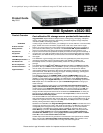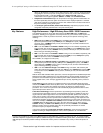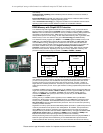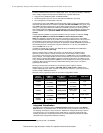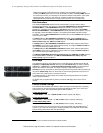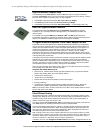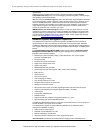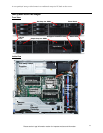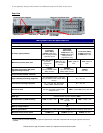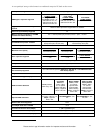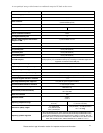
A cost-optimized storage-rich alternative to traditional enterprise 2U dual-socket servers
Please see the Legal Information section for important notices and information.
9
grouped more densely than round holes, providing greater airflow through the system cover.
This cooling scheme is important because newer, more powerful processors generate a
significant amount of heat, and heat must be controlled for the system to function properly.
Hot-Swap/Redundant Components
System availability is maximized through the extensive use of hot-swap and redundant
components, including:
• Redundant memory protection (with Chipkill protection, and memory mirroring enabled)
• Hot-swap, redundant hard disk drives (with RAID protection)—model-specific
• Optional hot-swap, redundant power supplies
Other Features
• Five USB 2.0 ports — Provides flexibility to add high-speed external devices. The USB 2.0
specification supports up to 480Mbps transfer rates. (Note: Not all USB 2.0 devices are
capable of achieving this rate.) Two ports are provided on the front of the server, two on the
back, plus one USB connector reserved for an internal tape drive, RDX Removable Disk
Backup System, or USB flash memory key containing an embedded hypervisor is supported
via another internal USB port. For pre-boot and normal drive use, use the external ports.
• Toolless slides — Allows quick rack installation and quicker upgrade and servicing of the
server.
• Toolless chassis — The cover can be opened without tools, and many components can be
removed and replaced without tools, including the CD-RW/DVD combo drive, hot-swap drives,
and PCIe adapters, as well as the integrated ServeRAID card, embedded hypervisor key, and
Virtual Media Key. This can save a servicer significant time.
Extensive System Support Features
The IBM services and technical support portfolio provides world-class, consistent, high-quality
service and support. The x3620 M3 server offers a number of tools and services designed to
make ownership a positive experience. From the start, IBM programs make it easier for you to
plan for, configure and purchase System x or xSeries servers, get them running and keep them
running long-term. These features include IBM Express Portfolio, IBM ServerProven
®
, IBM
Standalone Solutions Configuration Tool, IBM System x and BladeCenter Power Configurator,
IBM ServerGuide, IBM Systems Director Service and Support Manager, Product Customization
Services and extensive technical support offerings.
The IBM ServerProven program provides the confidence that specific options and operating
systems have been tested on the server and are officially supported to work together. It is
updated frequently to ensure that the latest compatibility information is always at your fingertips.
The IBM Standalone Solutions Configuration Tool (SSCT) is a downloadable tool that
simplifies the often complex chore of configuring a full rack of servers (including blade servers)
and confirming that you have all the cables, power distribution units, KVM (keyboard, video and
mouse) switch boxes and other components you need, as well as the proper airflow clearances,
electrical circuits and other environmental conditions.
IBM System x and BladeCenter Power Configurator helps IT managers plan for data center
power needs, by providing the following information for specific configurations of System x and
BladeCenter systems: power input (watts), PDU sizing (amps), heat output (BTUs), airflow
requirements through chassis (CFM), VA rating, leakage current (mA), and peak inrush current
(amps).
IBM ServerGuide (installed from CD) simplifies the process of installing and configuring System
x and xSeries servers. ServerGuide goes beyond mere hardware configuration by assisting with
the automated installation of the Microsoft Windows Server
®
2003 and 2008 operating systems,
device drivers and other system components, with minimal user intervention. (Drivers are also
included for support of Novell NetWare, Red Hat Linux and SUSE LINUX.) This focus on
deployment helps you reduce both you total cost of ownership and the complexity that
administrators and technical personnel face.
IBM Systems Director Service and Support Manager (previously called IBM Electronic Service
Agent
™
) is an innovative “call home” feature that allows System x and BladeCenter servers to
automatically report hardware problems to IBM support, which can even dispatch onsite service if
necessary to those customers entitled to onsite support under the terms of their warranty or an
IBM Maintenance Agreement. Service and Support Manager resides on a server and provides
electronic support and problem management capabilities through a highly secure electronic
dialogue between your systems and IBM. It monitors networked servers for hardware errors and
it can perform hardware and software inventories and report inventory changes to IBM. All
information sent to IBM is stored in a highly secure database and used for improved problem



